חדשות המחקר
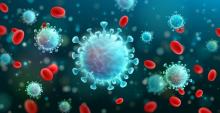
Elon Glassberg: Data Empowerment of Decision Makers in an Era of Pandemic 'Classic' and Artificial Intelligence Intersection In the Service of Medicine (J Med Internet Res .)
The COVID-19 outbreak required prompt actions by health authorities around the world, in response to a novel threat. With enormous amounts of information originating in sources with uncertain degree of validation and accuracy, it is essential to provide executive level decision makers with the most actionable, pertinent and updated data analysis to enable them to adapt their strategy swiftly and competently. We report here the origination of a COVID-19 dedicated response in the Israel Defense Force (IDF) with the assembly of an operational Data Center for the Campaign against Coronavirus (ID3C).

Alon Barash, Nomy Dickman, David Karasik: Educating future doctors in Covid-19 times: Anatomists lead the way! (Anat Sci Educ . )
We have read, with great interest, several articles published in the Anatomical Sciences Education regarding anatomy teaching in the Covid-19 pandemic (Evans et al, 2020; Pather et al., 2020; Smith and Pawlina, 2021) and would like to reflect on the subject. The Covid-19 (SARS-CoV-2) pandemic ravaged the world, claiming lives, shutting down economies, and affected many aspects of everyday life, including academic education (Bar Ilan University, 2021; Ben Gurion University, 2021). Like most countries, Israel was influenced dramatically by this outbreak.
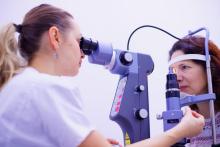
Elon Glassberg, Avi Benov: Combat-related ocular injuries in the IDF during the years 2013-2019 (J Trauma Acute Care Surg .)
Ocular injuries account for up to 13% of battle injuries, despite the implementation of advanced protective eyewear (PE). This study aims to describe the extent of ocular injuries over the last years among Israel Defense Force (IDF) soldiers, and to examine the change in PE policy introduced in 2013 and the effect of a high-intensity conflict on ocular injury characteristics.
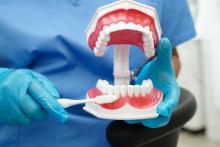
Dalit Porat Ben Amy, Victoria Yaffe, Imad Abu El-Naaj; Oral myopericytoma: a rare pediatric case report and a review of the literature (BMC Oral Health . )
Myopericytoma is a rare mesenchymal neoplasm with perivascular myoid differentiation that arises most commonly in middle adulthood. The lesion generally involves the subcutaneous tissue of distal extremities. Myopericytoma of the oral cavity is extremely rare. Herein we report a case of oral myopericytoma in a pediatric patient, who was treated via a conservative approach with a follow up of 8 years. The case is followed by a literature review. To our knowledge this is the first documented case of oral myopericytoma affecting a patient of such a young age

Amjad Shalabi, Erez Kachel, Liza Grosman-Rimon, Wadi Kinany, Offer Amir, Eylon Ram: Unusual complications following left ventricular assisted device implantation: case series (J Cardiothorac Surg . )
While left ventricular assisted devices (LVAD) have revolutionized the treatment of advanced heart failure, they are associated with a wide range of complications, including bleeding and infection which are the most common complications reported in the literature. Our case series report four unusual complications not related to gastrointestinal bleeding and infections and their management.
NOTE: Erratum published September 6, 2021, here.
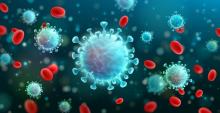
Edo Y Birati: Characteristics and Outcomes of COVID-19 in Patients on Left Ventricular Assist Device Support (Circ Heart Fail .)
The coronavirus disease 2019 (COVID-19) pandemic continues to afflict millions of people worldwide. Patients with end-stage heart failure and left ventricular assist devices (LVADs) may be at risk for severe COVID-19 given a high prevalence of complex comorbidities and functional impaired immunity. The objective of this study is to describe the clinical characteristics and outcomes of COVID-19 in patients with end-stage heart failure and durable LVADs.
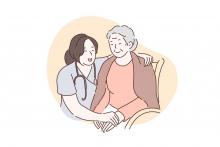
Baruh Polis, David Karasik, Abraham O Samson: Alzheimer's disease as a chronic maladaptive polyamine stress response (Aging (Albany NY) .)
Polyamines are nitrogen-rich polycationic ubiquitous bioactive molecules with diverse evolutionary-conserved functions. Their activity interferes with numerous genes' expression resulting in cell proliferation and signaling modulation. The intracellular levels of polyamines are precisely controlled by an evolutionary-conserved machinery. Their transient synthesis is induced by heat stress, radiation, and other traumatic stimuli in a process termed the polyamine stress response (PSR). Notably, polyamine levels decline gradually with age; and external supplementation improves lifespan in model organisms. This corresponds to cytoprotective and reactive oxygen species scavenging properties of polyamines. Paradoxically, age-associated neurodegenerative disorders are characterized by upsurge in polyamines levels, indicating polyamine pleiotropic, adaptive, and pathogenic roles. Specifically, arginase overactivation and arginine brain deprivation have been shown to play an important role in Alzheimer's disease (AD) pathogenesis. Here, we assert that a universal short-term PSR associated with acute stimuli is beneficial for survival.
Efficacy of Birth Dose Vaccination in Preventing Mother-to-Child Transmission of Hepatitis B: A Randomized Controlled Trial Comparing Engerix-B and Sci-B-Vac (Vaccines (Basel) . )
Peripartum transmission of hepatitis B virus (HBV) from an infected mother to the child can be prevented in most but not all cases by immediate vaccination of the newborn. The aim of this study was to compare the efficacy of two licensed hepatitis B vaccines, Engerix-B versus Sci-B-Vac, in preventing peripartum HBV transmission. (Rifaat Safadi, Tawfik Khoury, Nizar Saed, Marwan Hakim, Jeryes Jamalia, Yousef Nijim, Nicola Farah, Tawfik Nuser, Mahmud Mahamid)

Raunak Saab, Rasmi Abu-Ras, Hussein Darawshi: Maturity Onset Diabetes of the Young Type 2 (MODY2): Insight from an Extended Family (Diabetes Res Clin Pract .)
Assesses long-term outcome of patients with maturity onset diabetes of the young, type 2 (MODY2) in a unique large cohort of patients with the same genetic and environmental background.
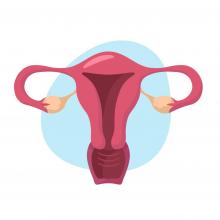
Johnny S Younis, Shiran Yakovi, Yuri Perlitz: Proof of concept use of progesterone/estradiol ratio to investigate late follicular progesterone in women with low number of pre-ovulatory follicles (Minerva Endocrinol (Torino) . )
Investigates late follicular progesterone (P) serum level in women with low number of pre-ovulatory follicles in the assisted reproductive technologies (ART) setting.
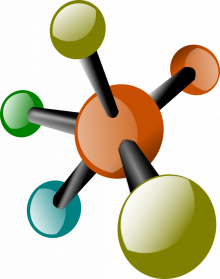
SMURF2-mediated ubiquitin signaling plays an essential role in the regulation of PARP1 PARylating activity, molecular interactions, and functions in mammalian cells (FASEB J .)
Poly(ADP-ribose) polymerase 1 (PARP1) is a key molecular stress sensor and response mediator implicated in multiple cellular functions in health and diseases. Despite its importance and intrinsic involvement in pivotal molecular and cellular processes, including DNA repair, transcription regulation, chromatin organization, and cell death, the regulatory mechanisms of PARP1 are poorly understood. In this study, we show that SMURF2, a HECT-type E3 ubiquitin ligase and suggested tumor suppressor, physically interacts with PARP1 in different cellular settings, directly ubiquitinates it in vitro and stimulates its PARylation activity in cells, the phenomenon that required SMURF2 E3 ubiquitin ligase function.
(Nataša Ilić, Yulei Tao, Sandy Boutros-Suleiman, Venkata Narasimha Kadali, Andrea Emanuelli, Gal Levy-Cohen, Michael Blank)
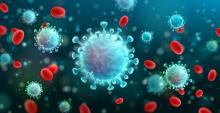
Shimon Edelstein, Shebly Tannous, Mevasseret T Jacobs, Hila Ben-Amram, Salman Zarka: BNT 13b2 Pfizer vaccine protects against SARS-CoV-2 respiratory mucosal colonization even after prolonged exposure to positive family members (J Hosp Infect .)
We wanted to investigate whether it was possible for vaccinated hospital workers to be carriers of SARS-CoV-2 as a result of prolonged, high-level exposure.
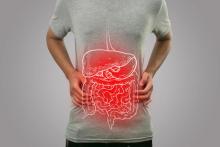
Amir Mari: Assessment and management of dysphagia and achalasia (Clin Med (Lond) . )
Dysphagia is a common symptom which can vary in severity and aetiology; at one end, it can be a benign inconvenience, on the other, there can be serious morbidity associated with malnutrition. It is crucial to identify those with mucosal and structural disease, including malignancy as a priority first....

Gassan Moady, Shaul Atar: (Quarantine-induced Stress Cardiomyopathy (Takotsubo syndrome) during the COVID-19 pandemic (Isr Med Assoc J . )
Takotsubo syndrome (TTS) is a non-ischemic cardiomyopathy characterized by an acute reversible left ventricular dysfunction with typical apical ballooning, usually with subsequent complete spontaneous recovery. TTS may be triggered by several physical and emotional stressors. The name Covidsubo was recently adopted to describe this emerging entity. TTS during quarantine may be a reasonable outcome of the overwhelming stress and fear of this pandemic. However, according to the current literature, conflicting results have been reported regarding the incidence of this syndrome during the first wave of the pandemic, and further studies are needed. High index of suspicion is needed to identify patients during the next waves of the pandemic, particularly given the need for minimizing imaging modalities and contact with the patients.
Describes two cases of TTS triggered by quarantine during the coronavirus disease-2019 (COVID-19) pandemic.





